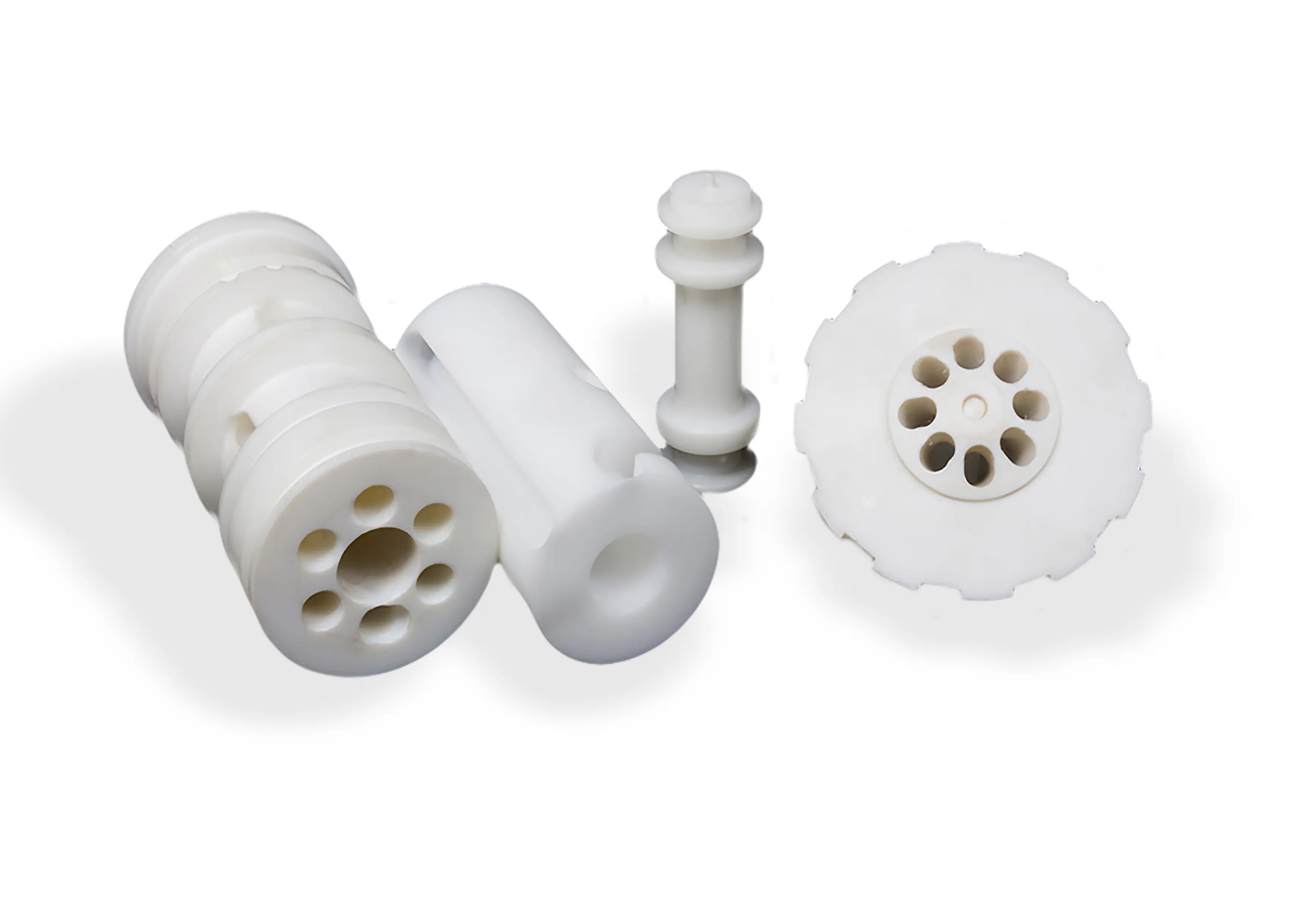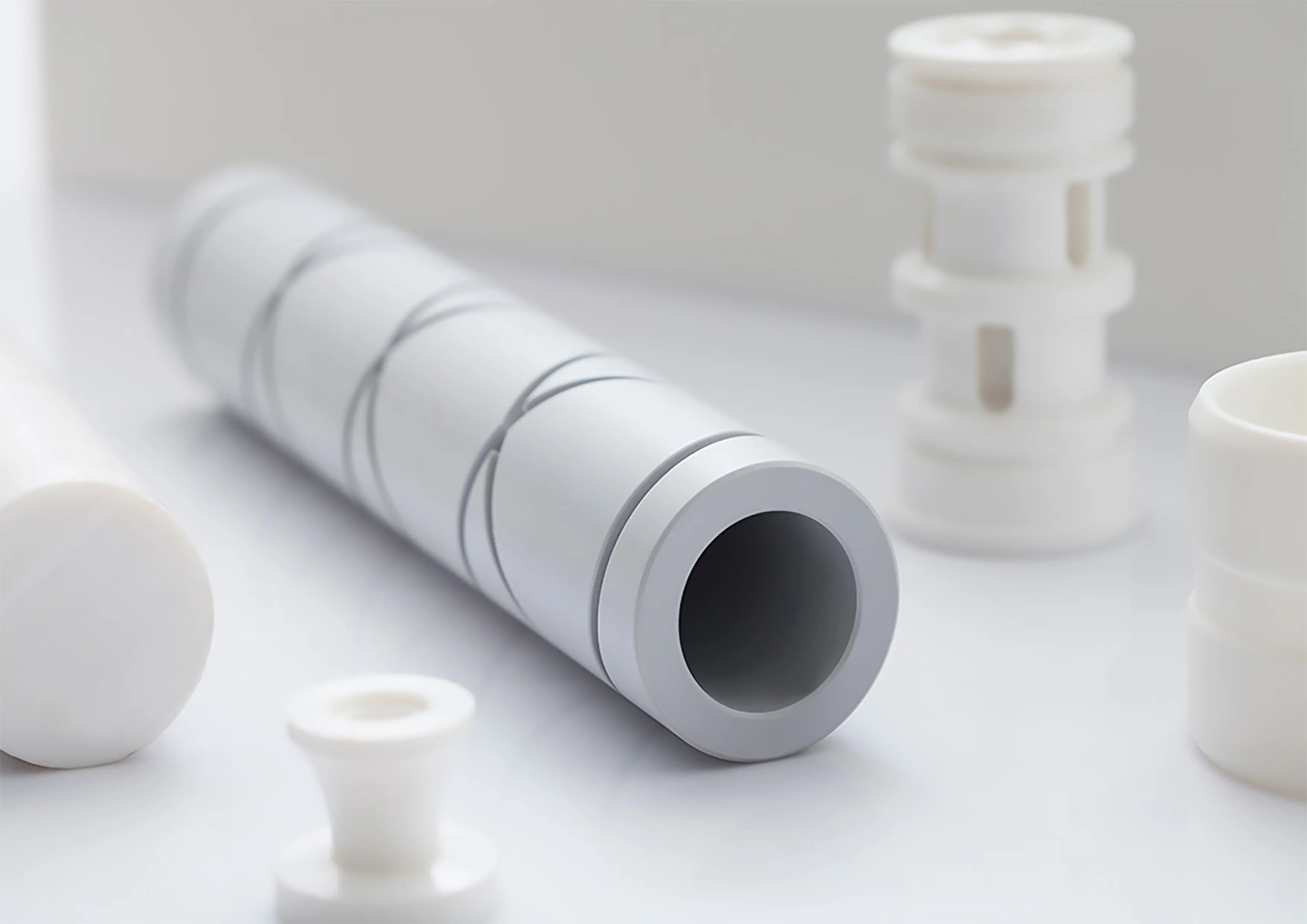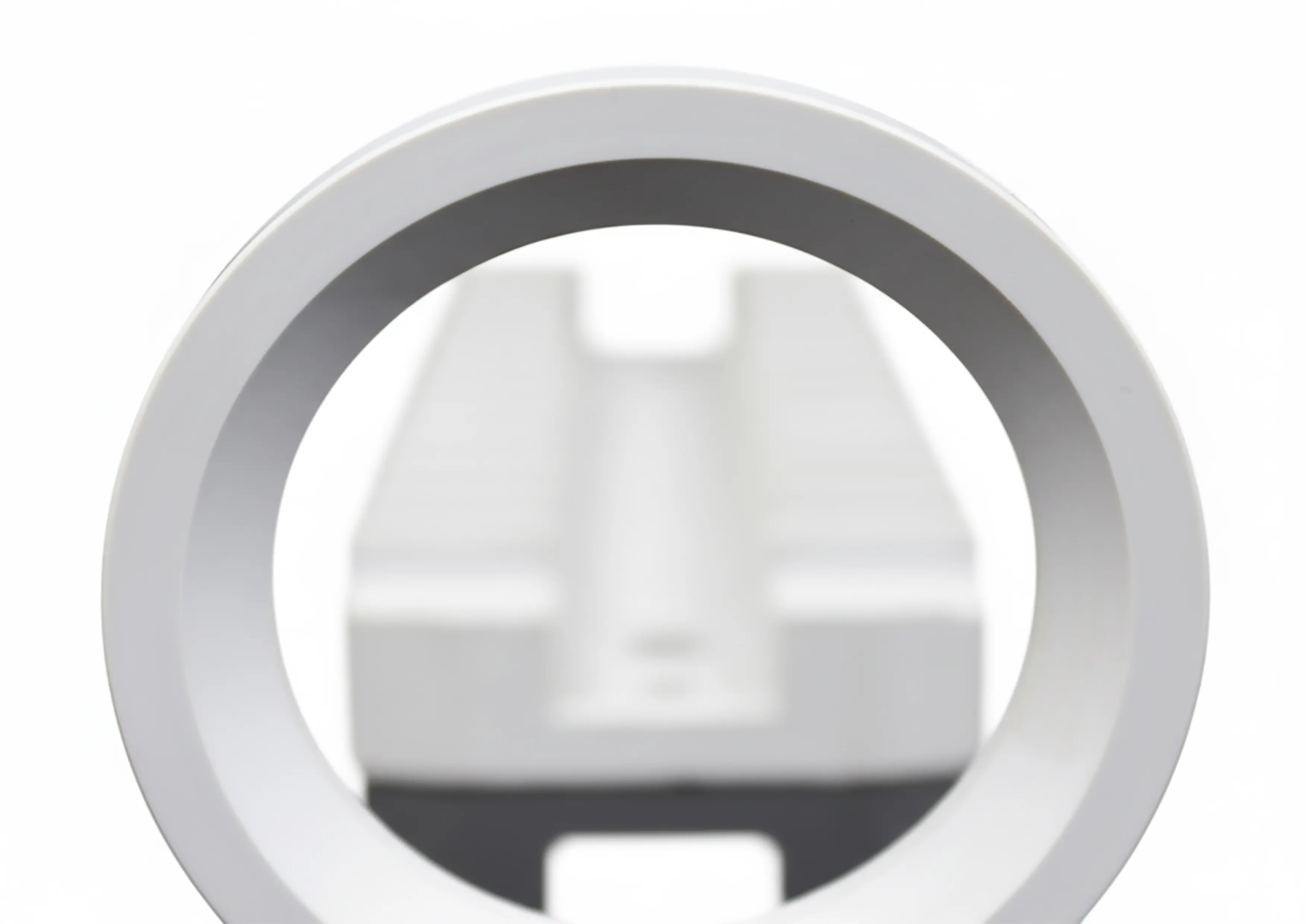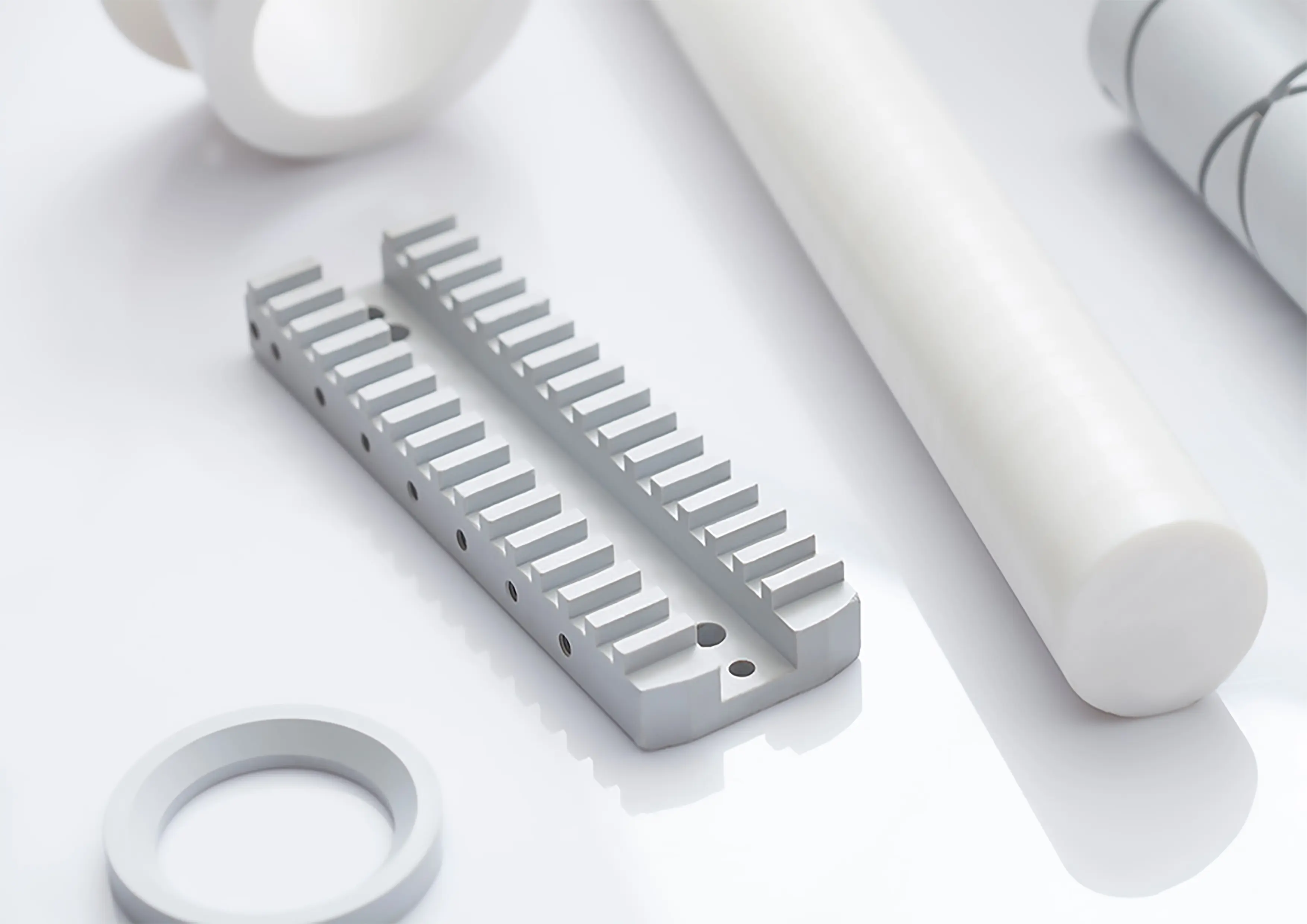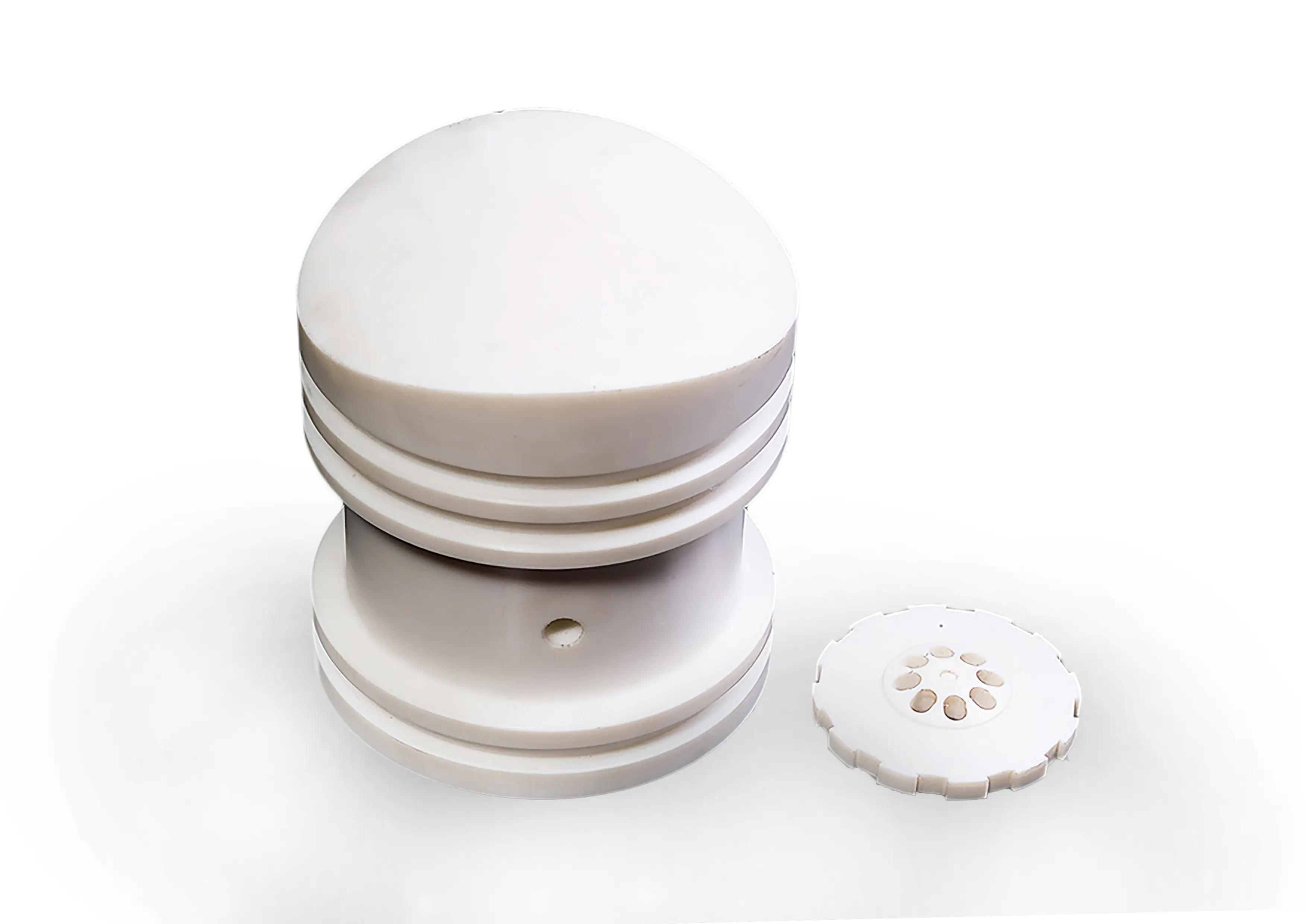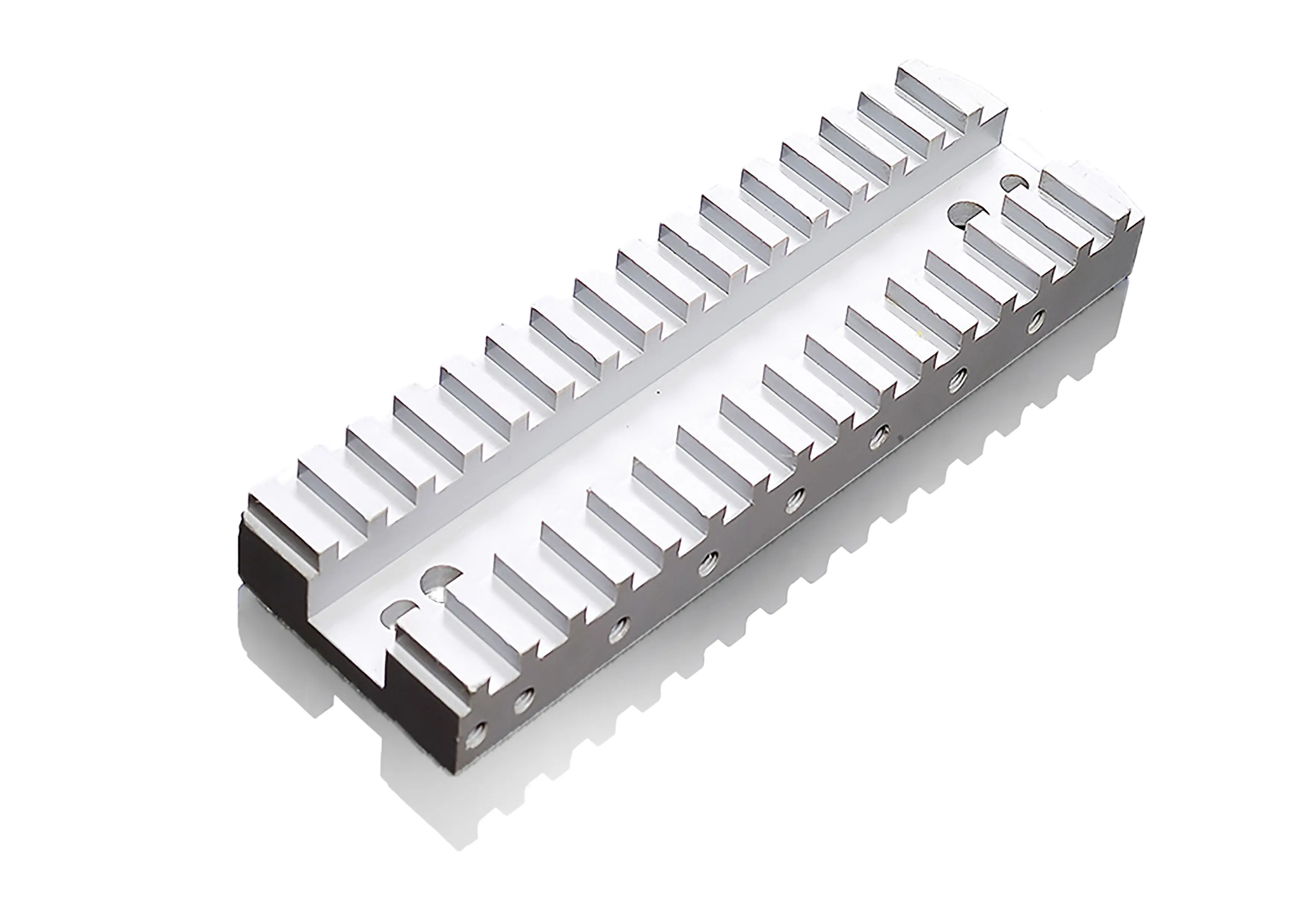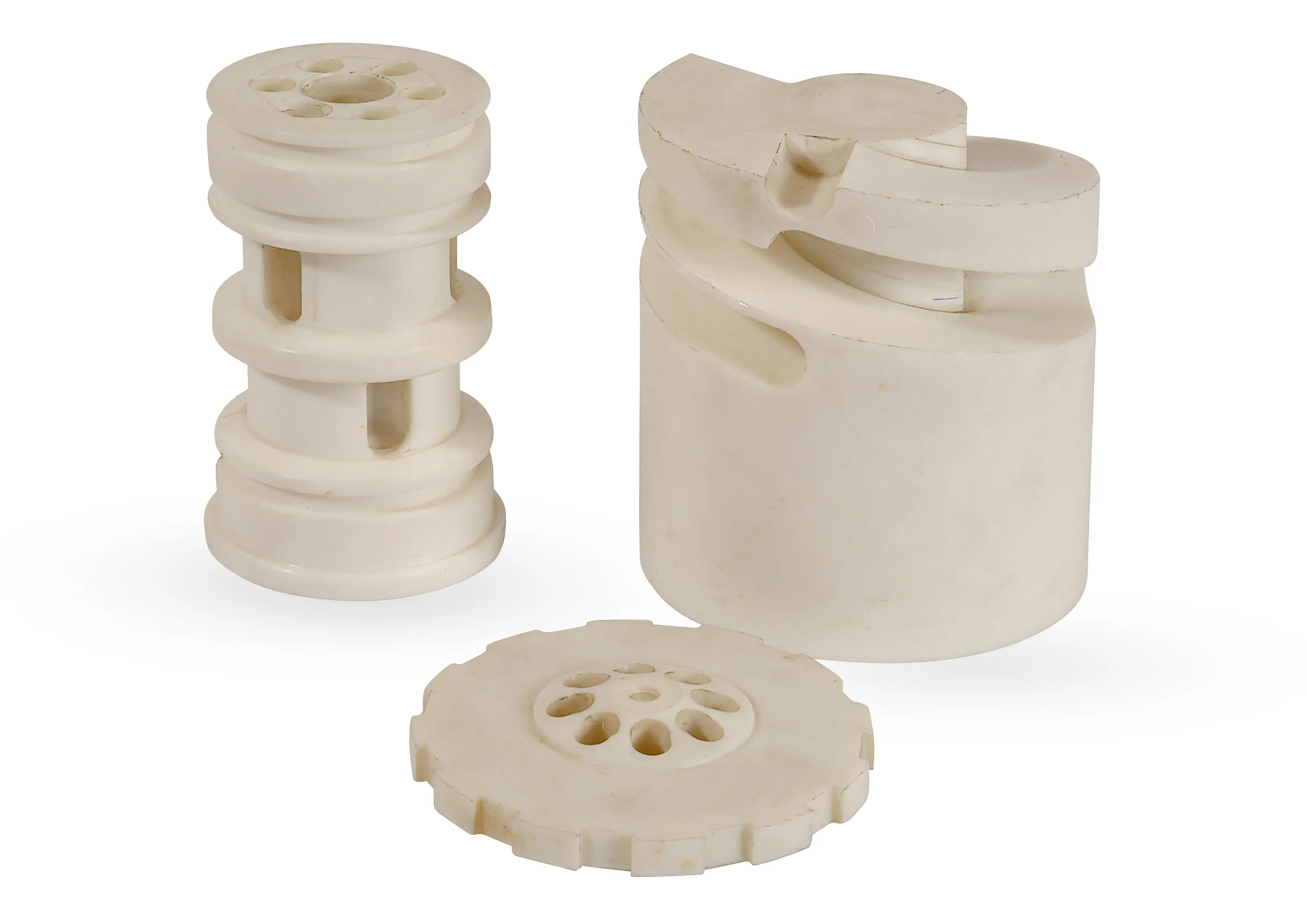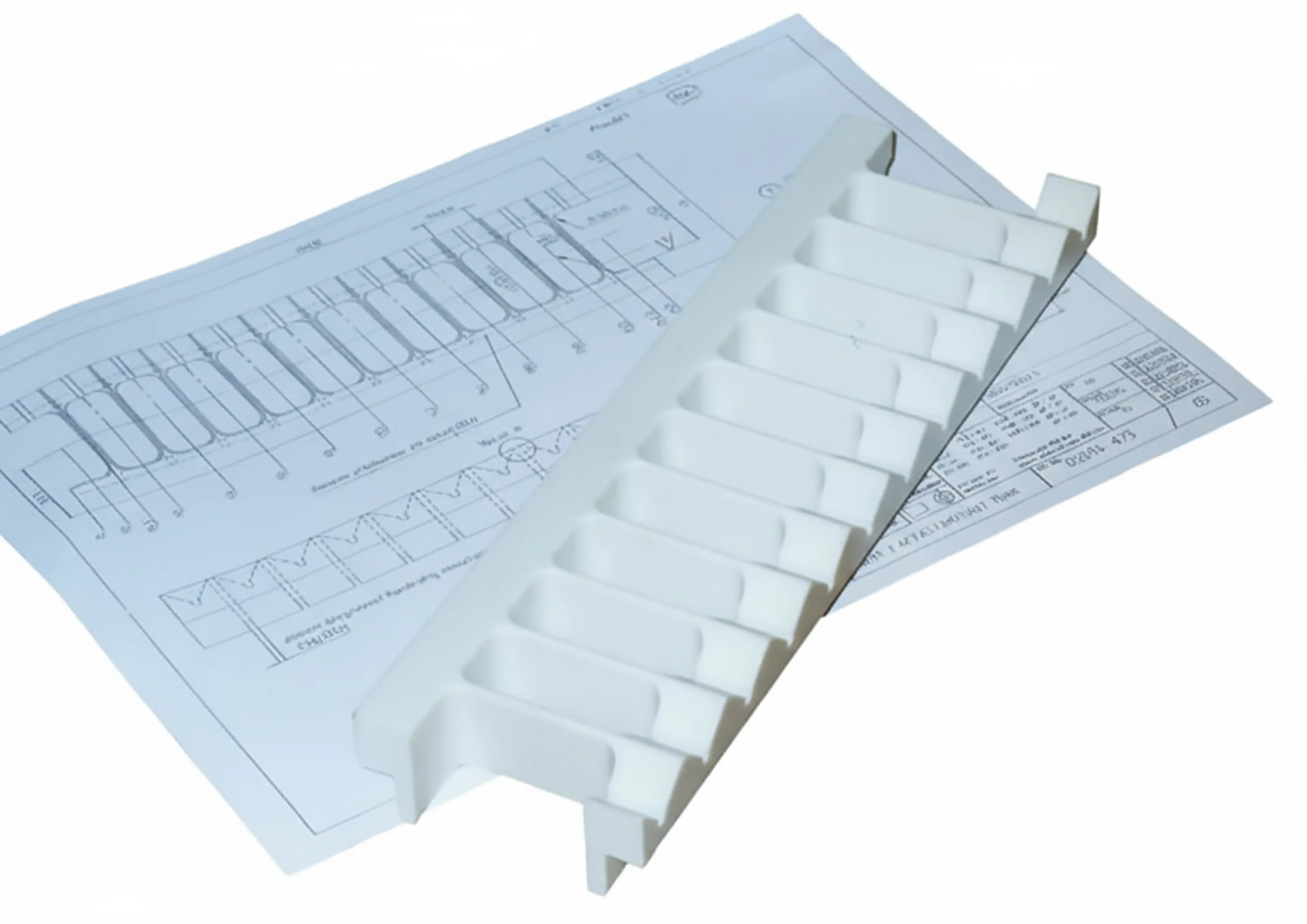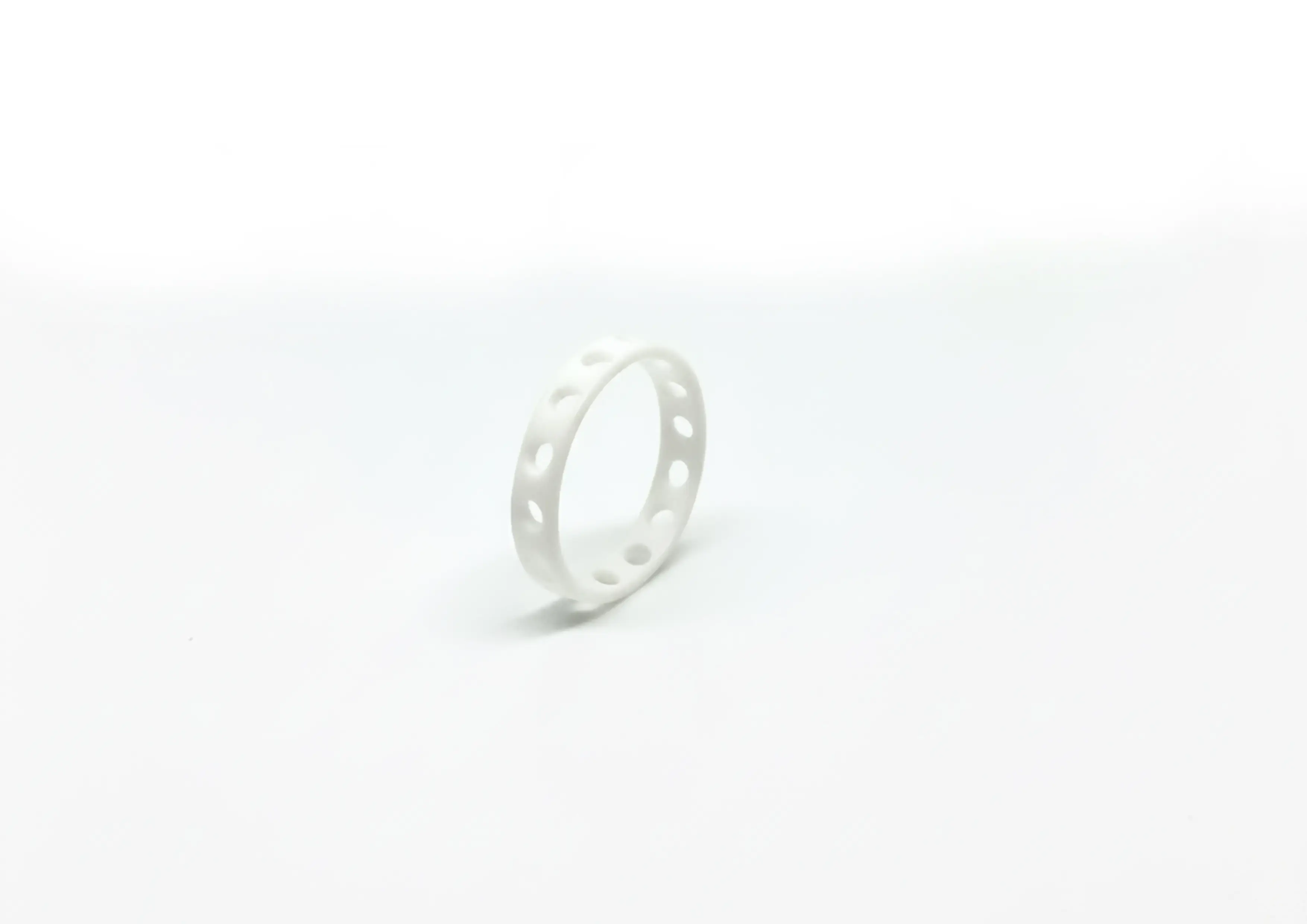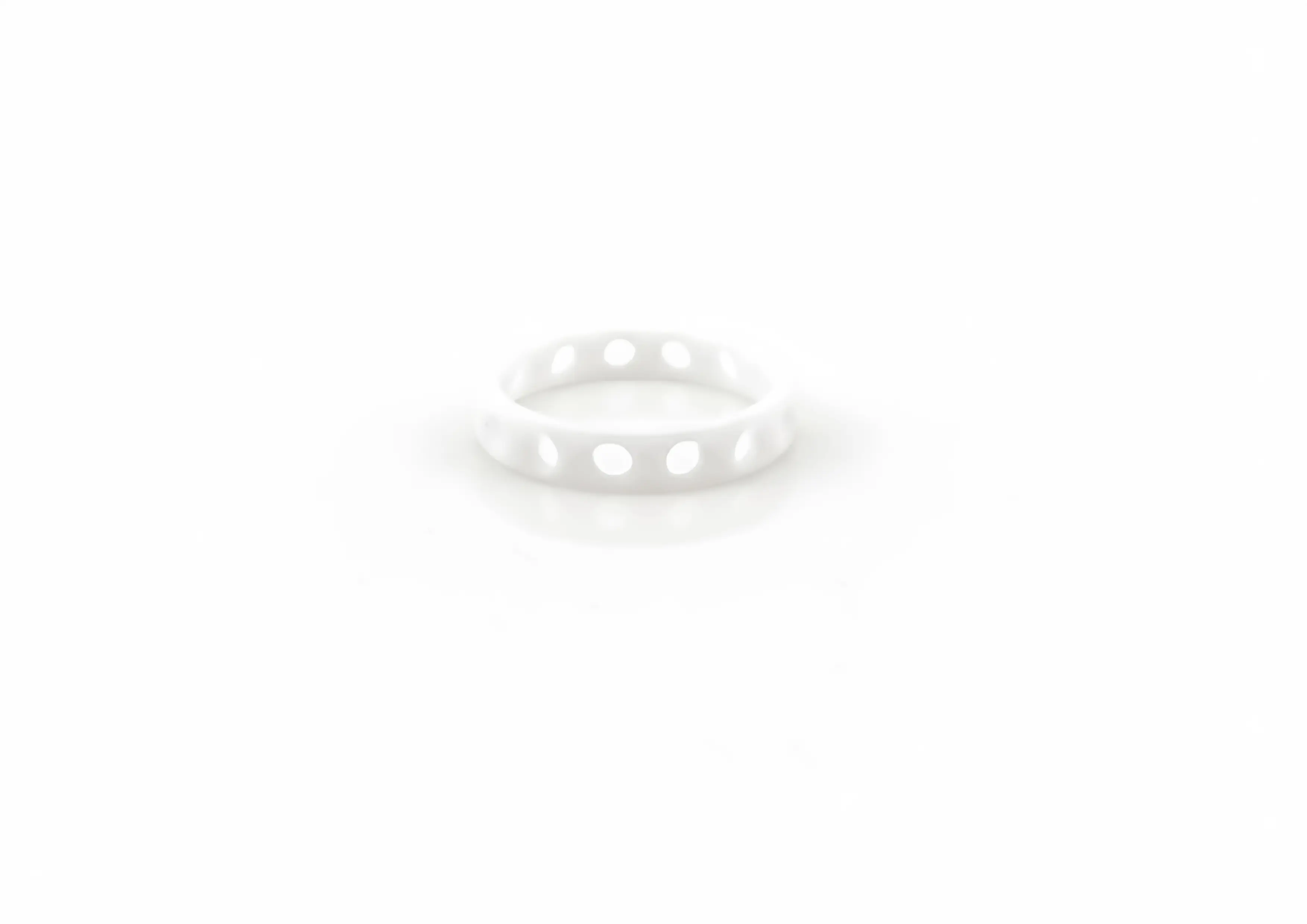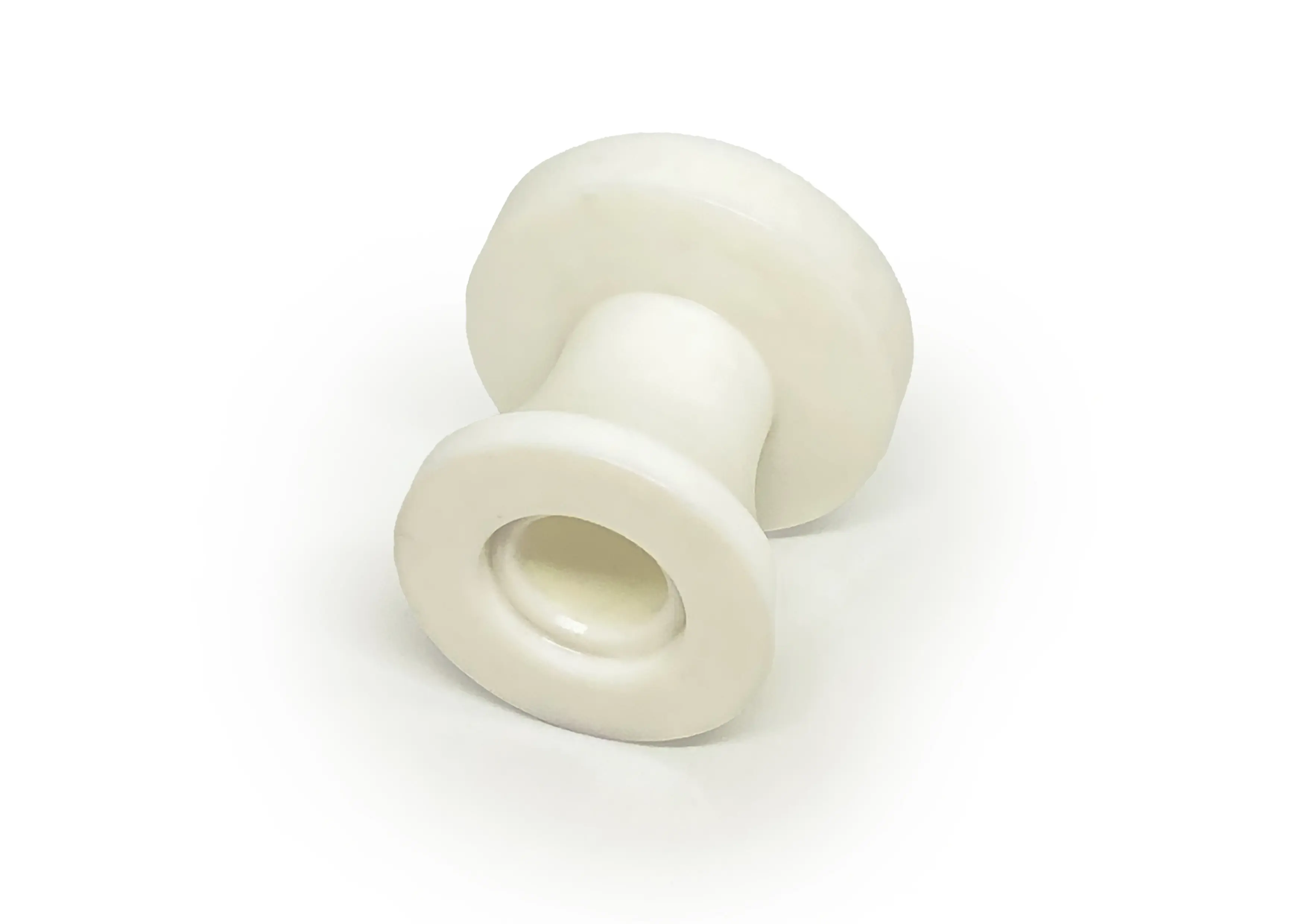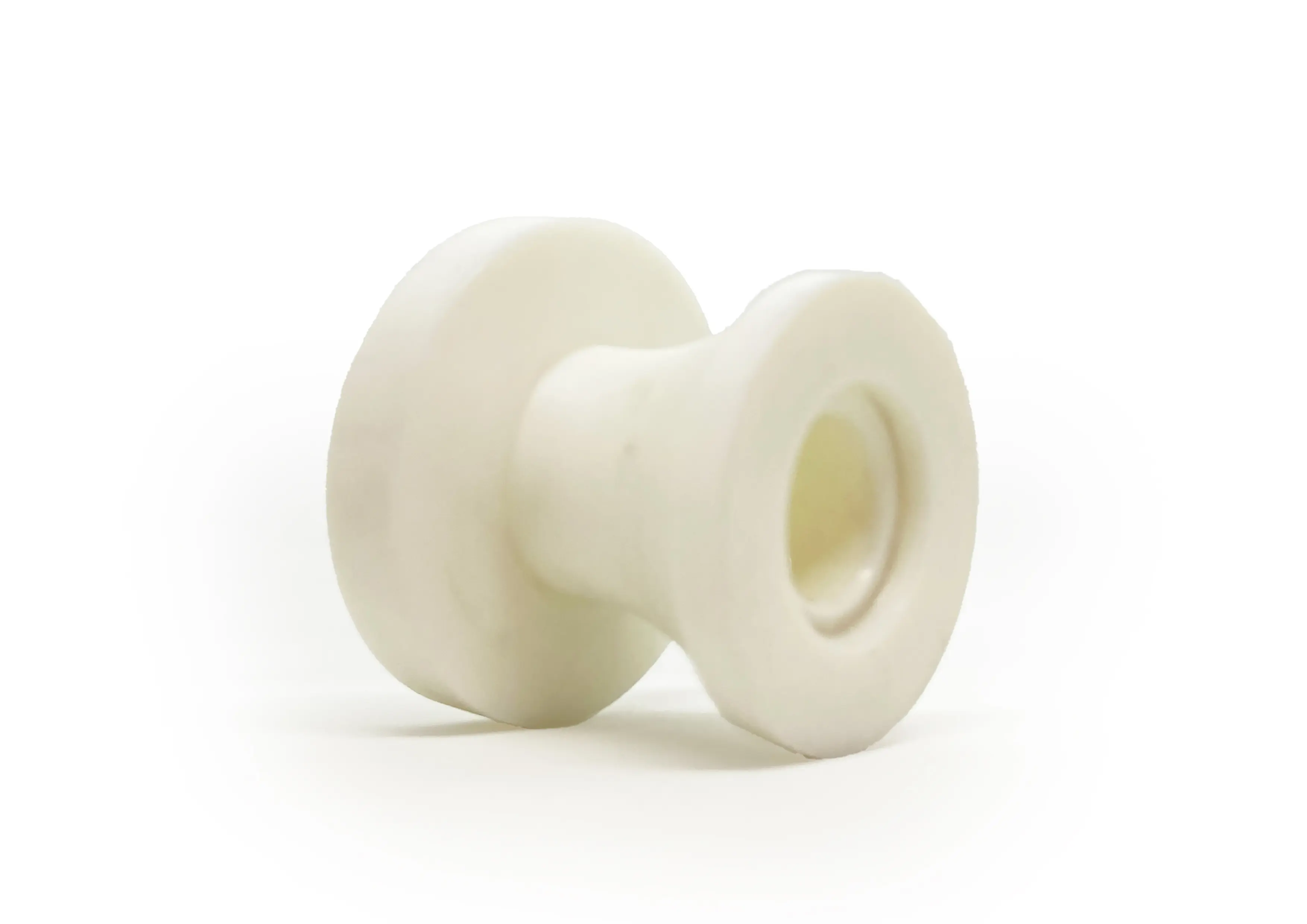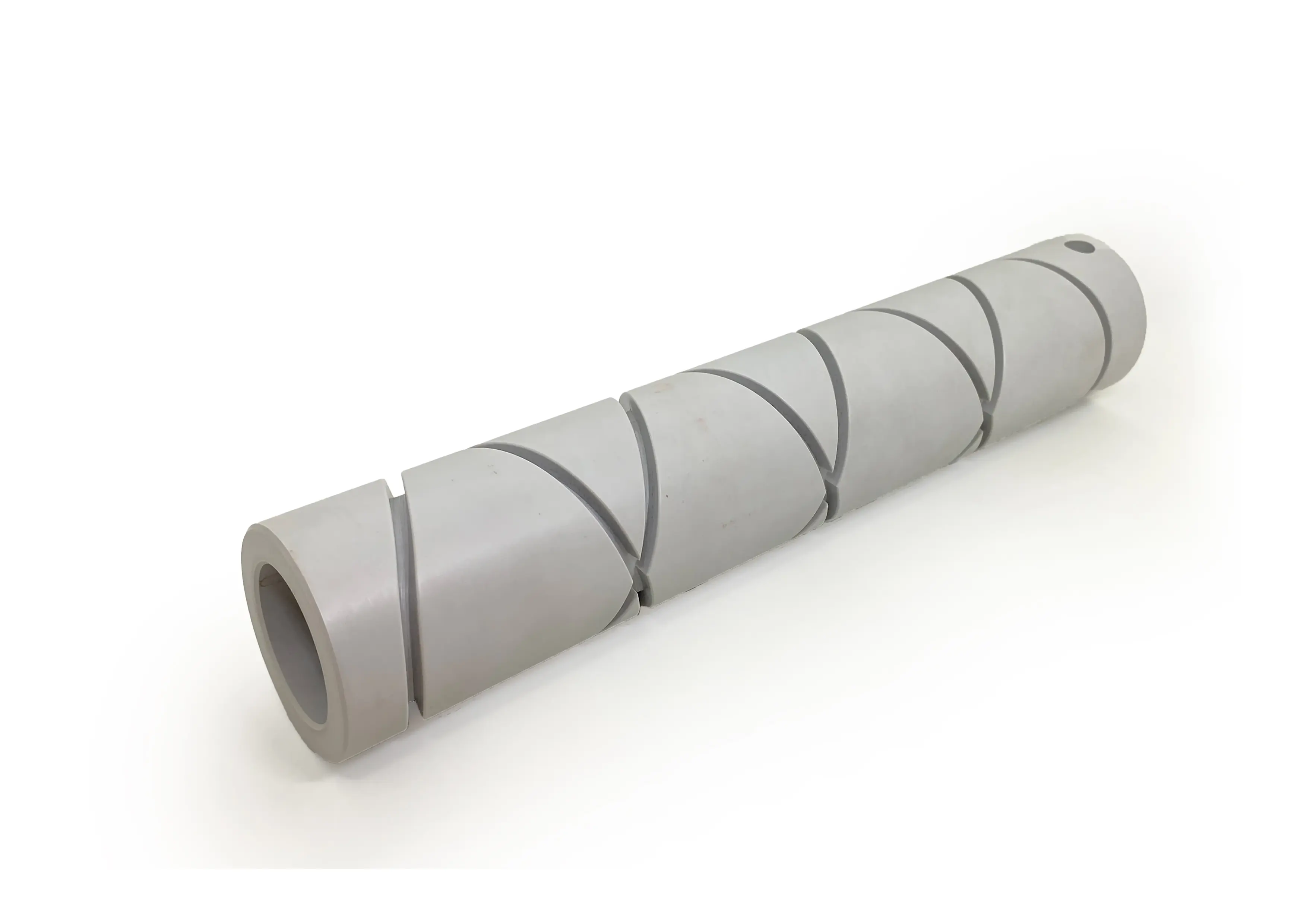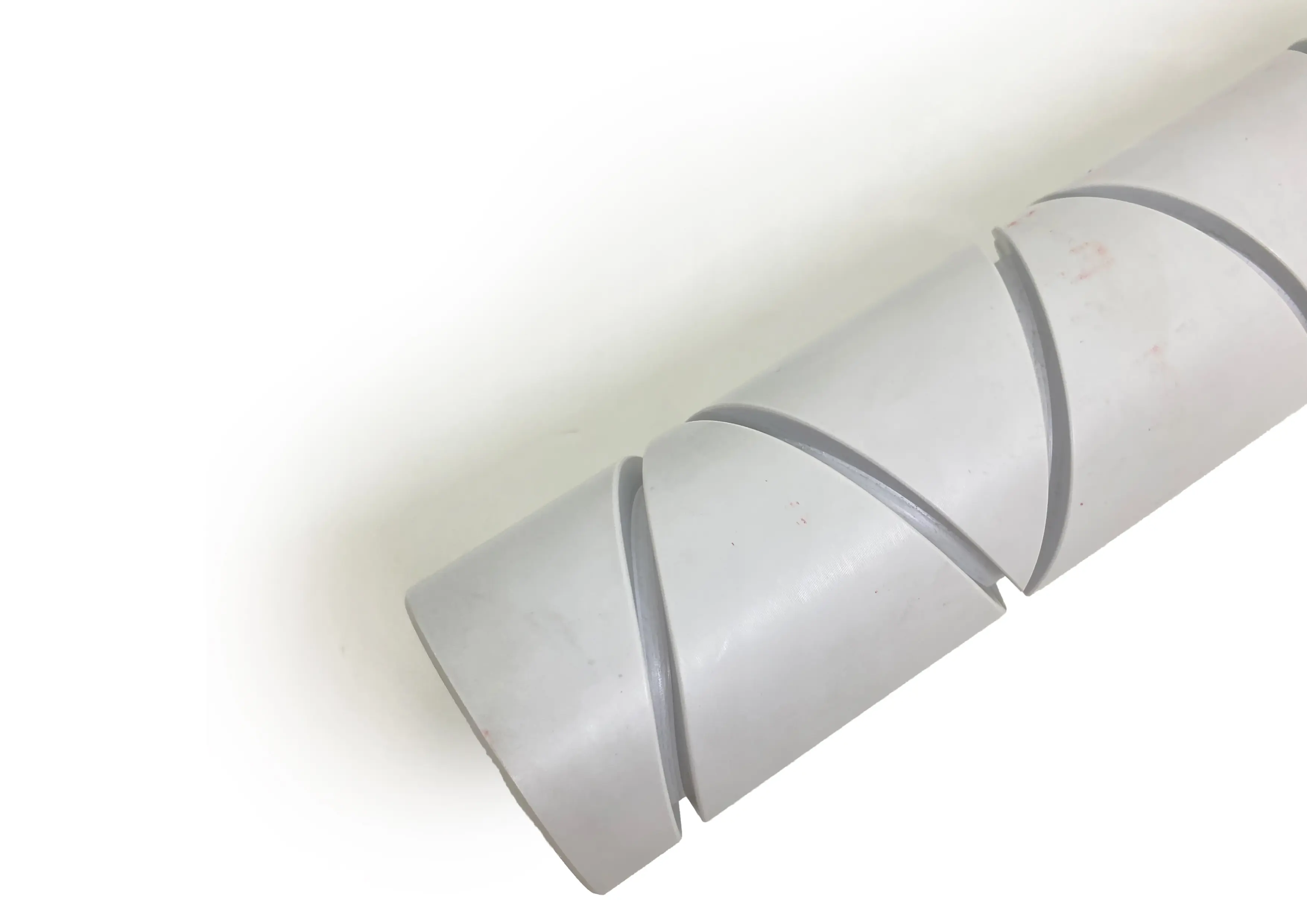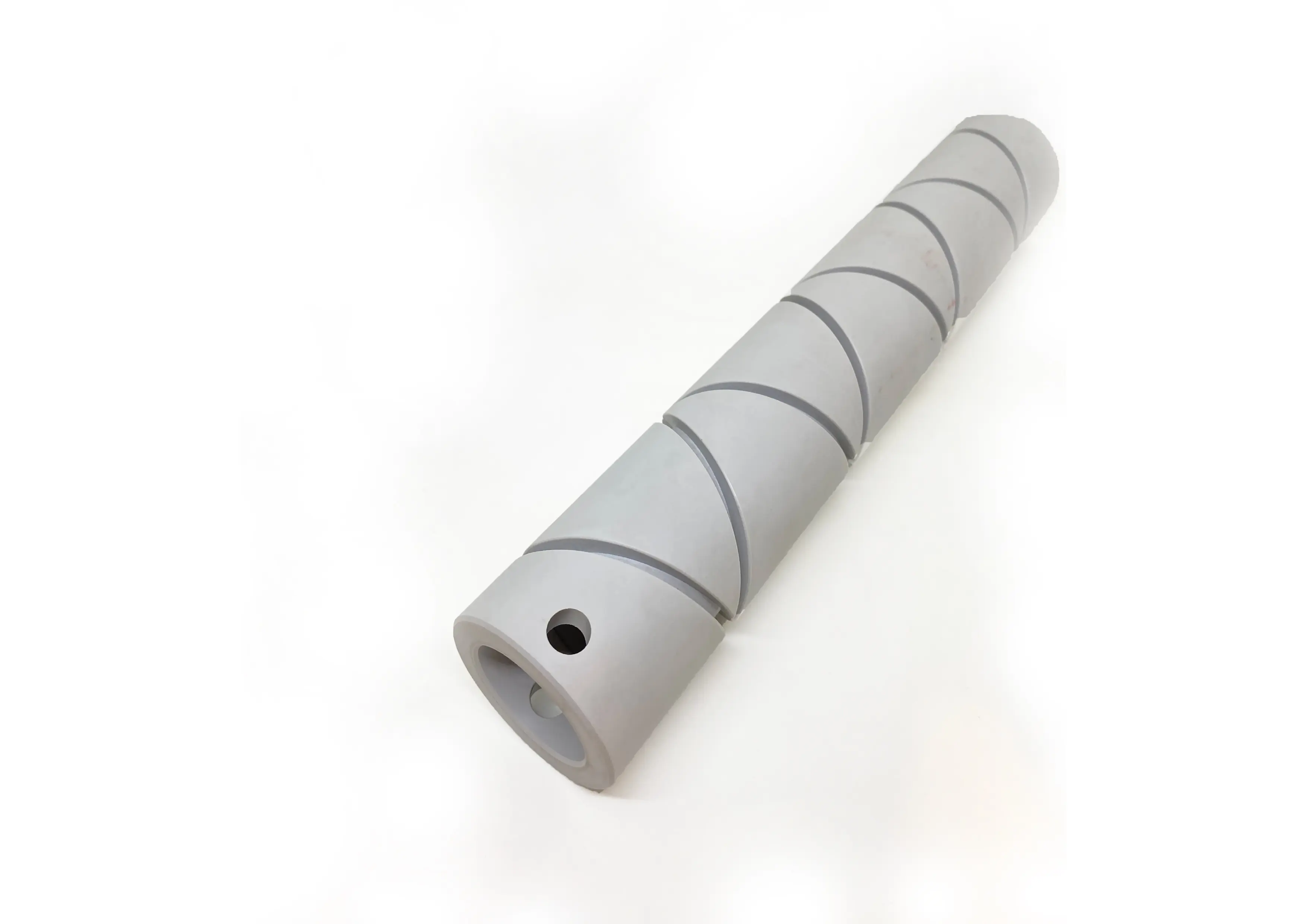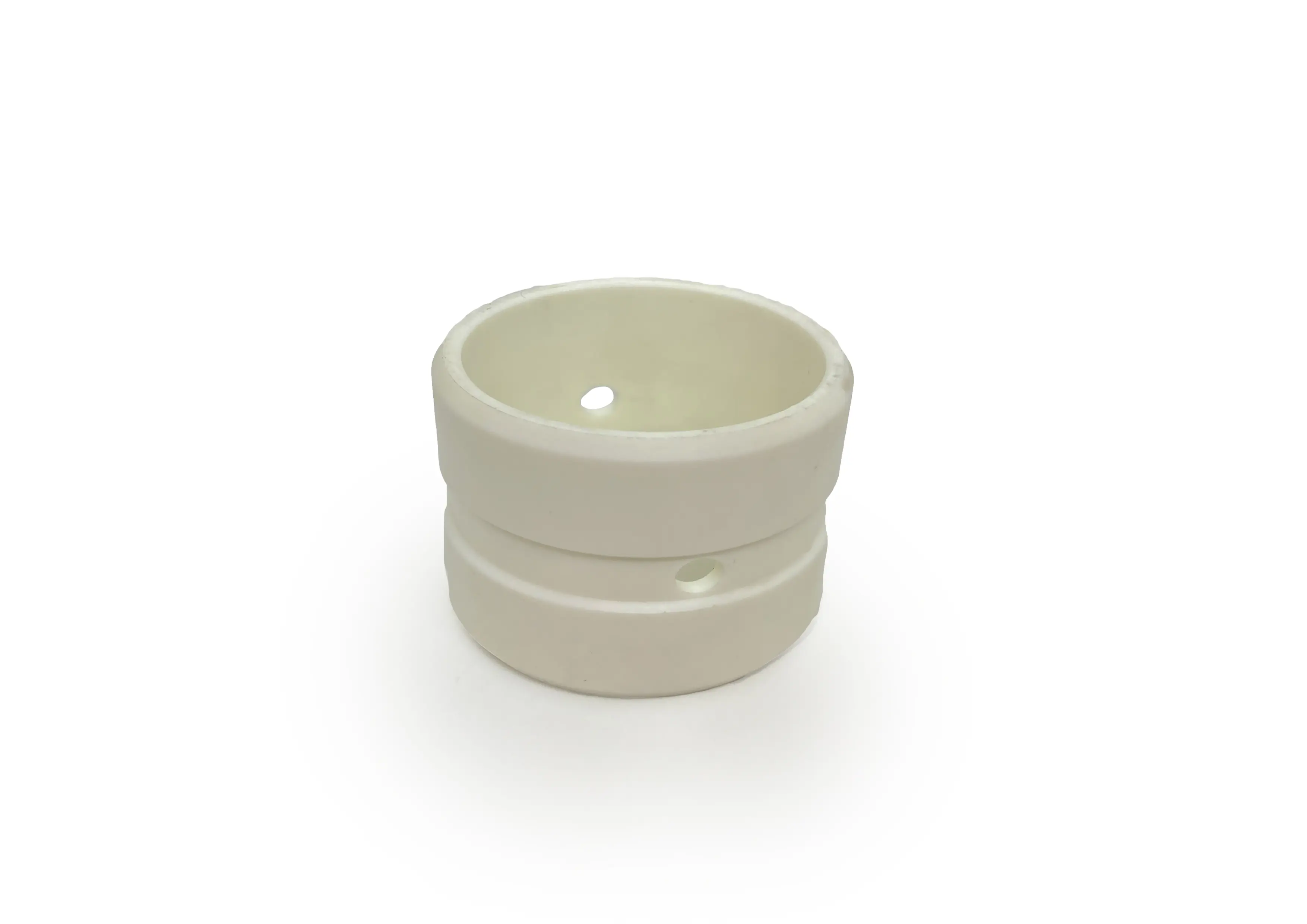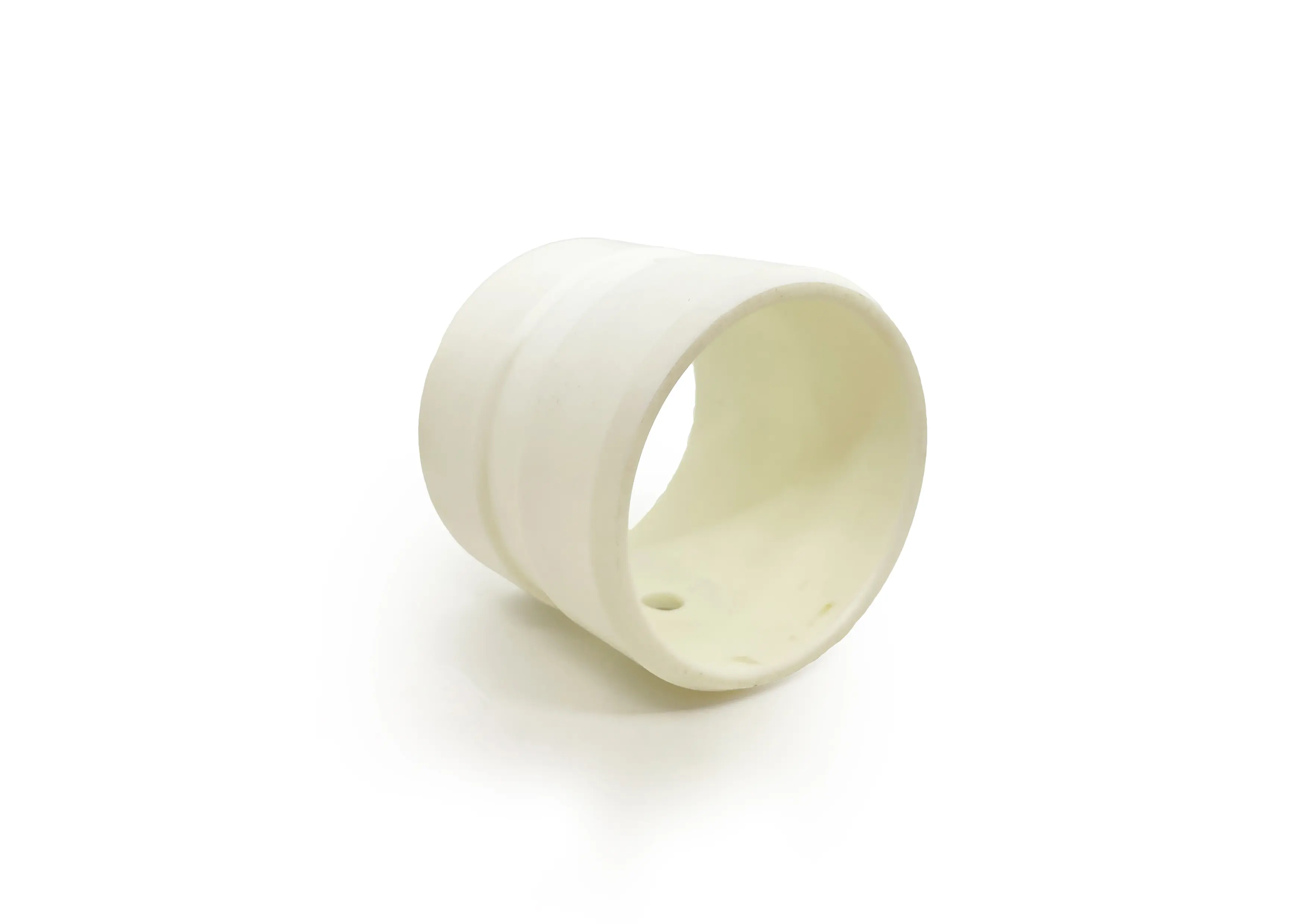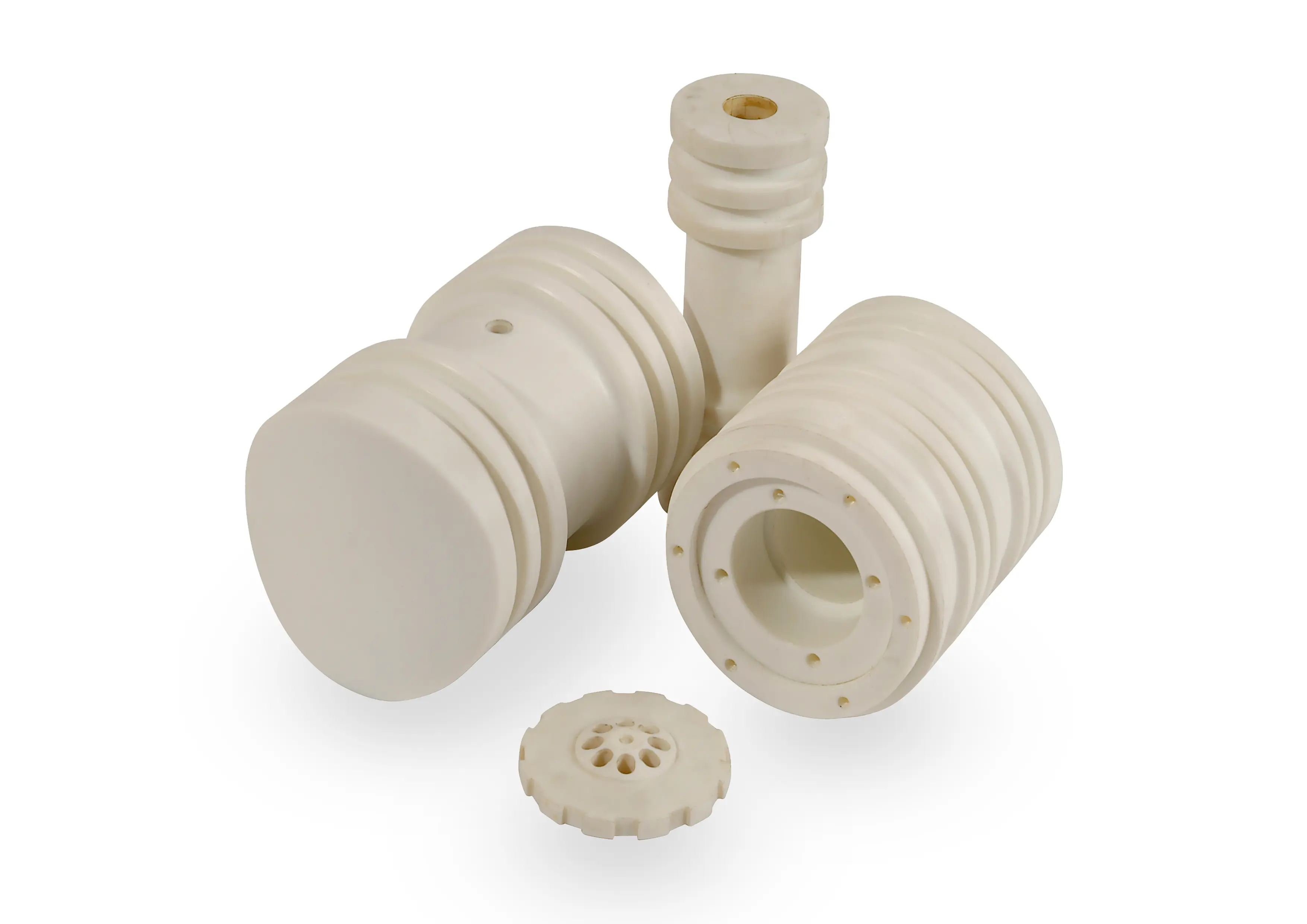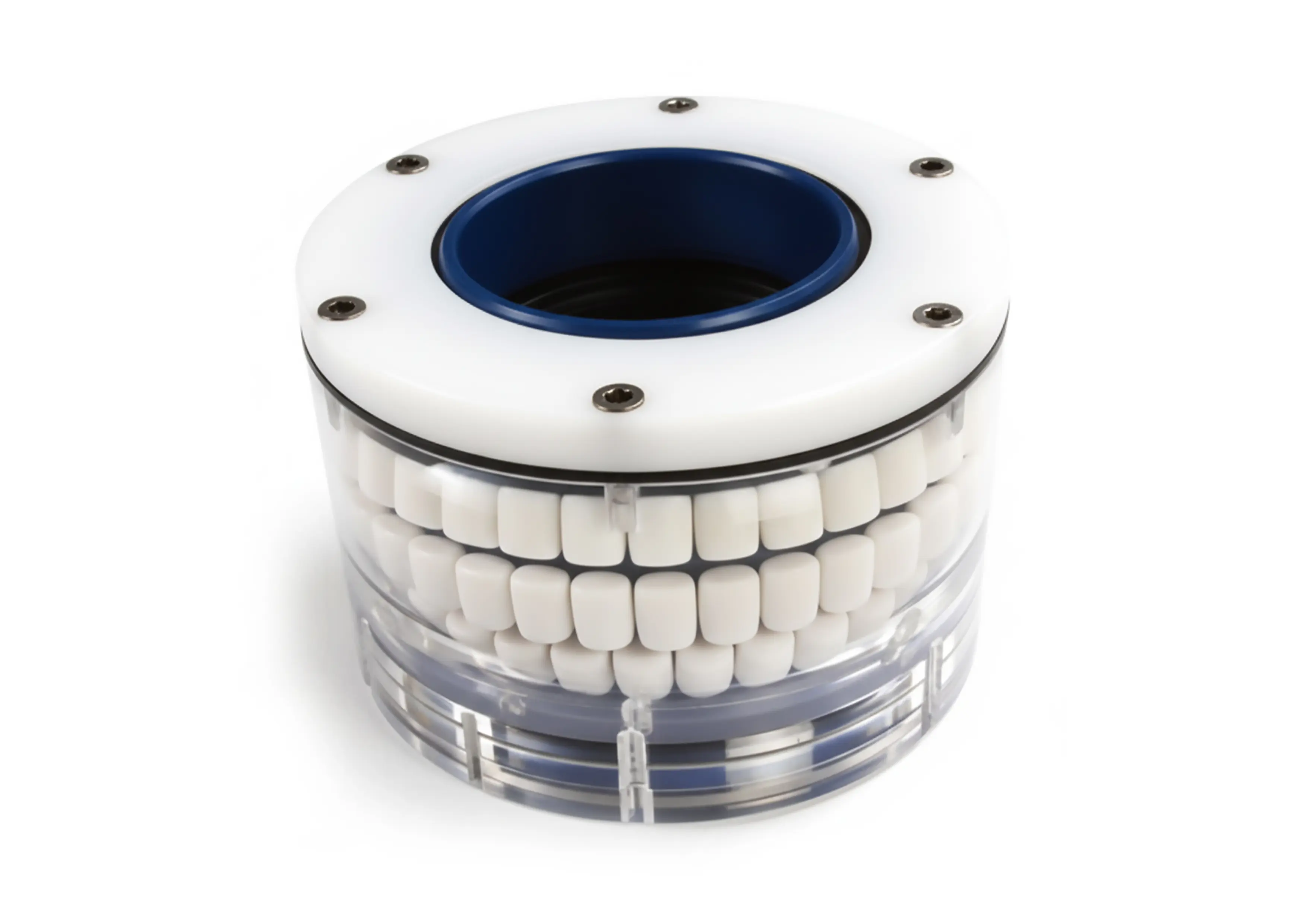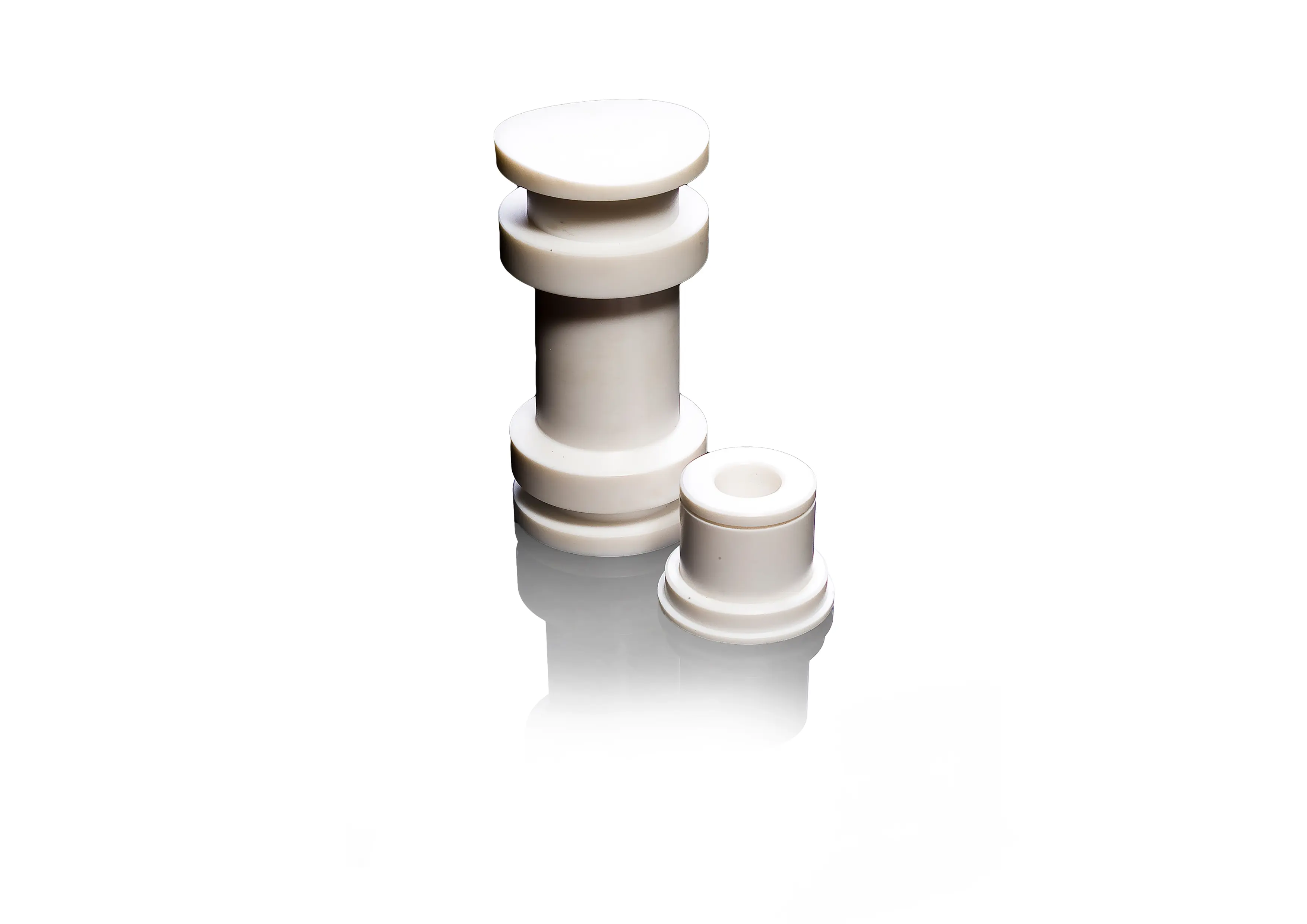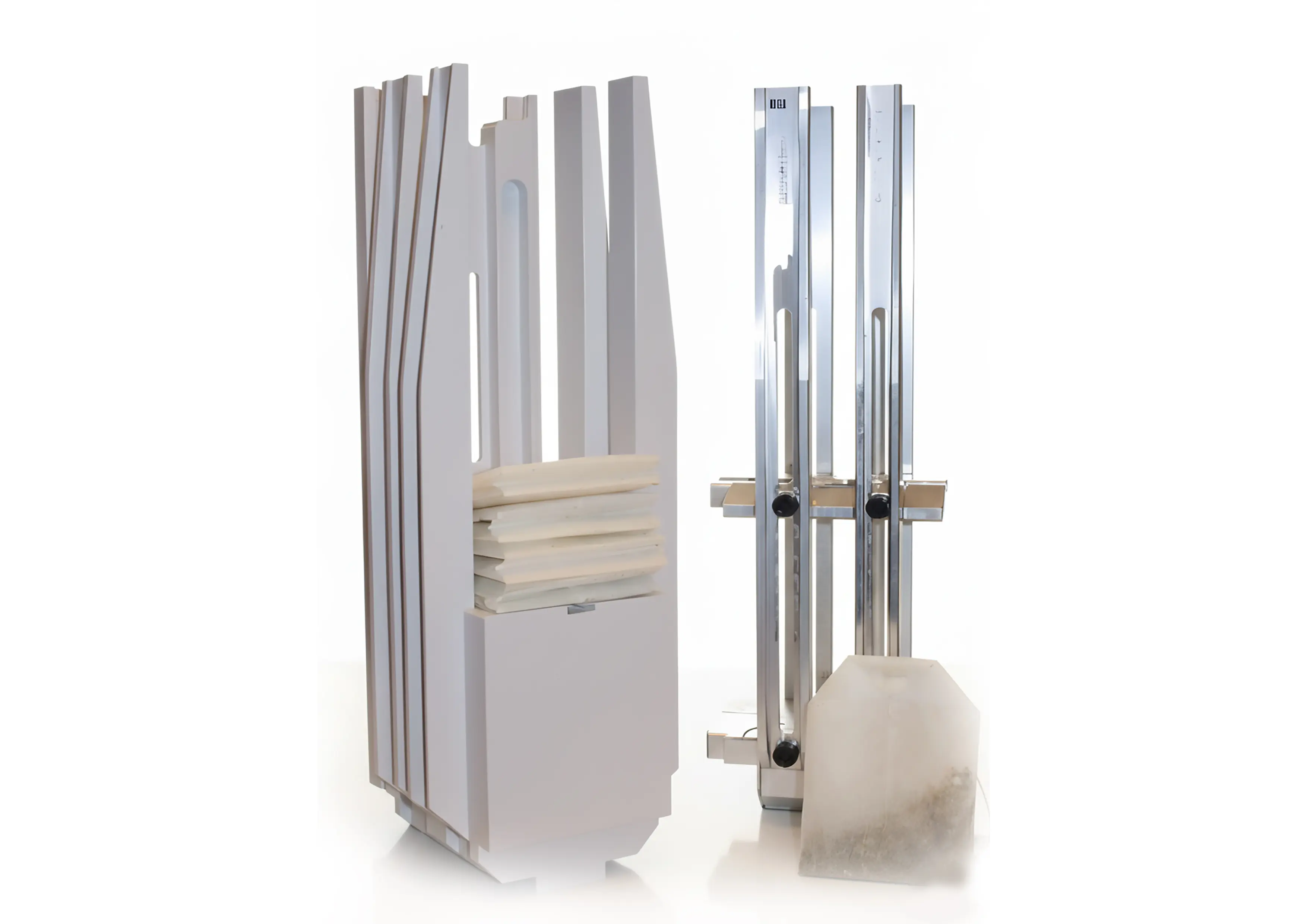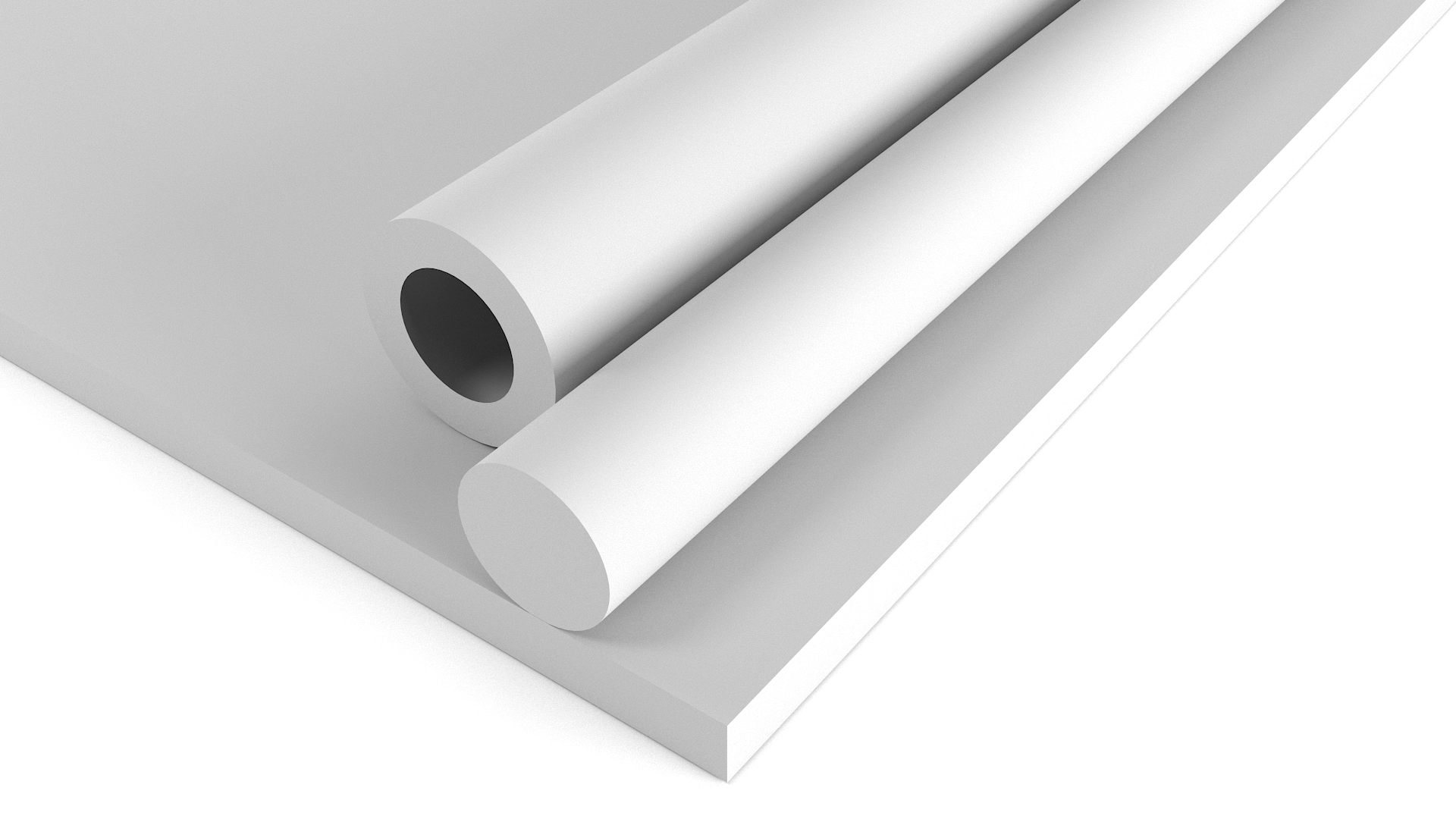Polyethylene Terephthalate [PET]
General Engineering Plastics 120°C
- High mechanical strength, stiffness and hardness
- Very good creep resistance
- Low and constant coefficient of friction
- Excellent wear resistance [comparable with or even better than nylon grades]
- Moderate impact strength
- Very good dimensional stability [better than polyacetal]
- Excellent stain resistance
- Better resistance to acids than nylon or polyacetal
- Good electrical insulating properties
- Physiologically inert [suitable for food contact]
- Good resistance to high energy radiation [gamma and X-rays]
- Since PET is relatively notch and impact-sensitive, all internal corners should have a radius (R > 1 mm).
- To prevent edge chipping during turning, boring, or milling, chamfered edges are recommended, providing a smoother transition between the cutting tool and the plastic workpiece.
- Heavily loaded bearings (bushings, thrust washers, guides, etc.)
- Dimensionally stable precision parts (bushings, slideways, gears, rollers, pump components, etc.)
- Electrically insulating components
